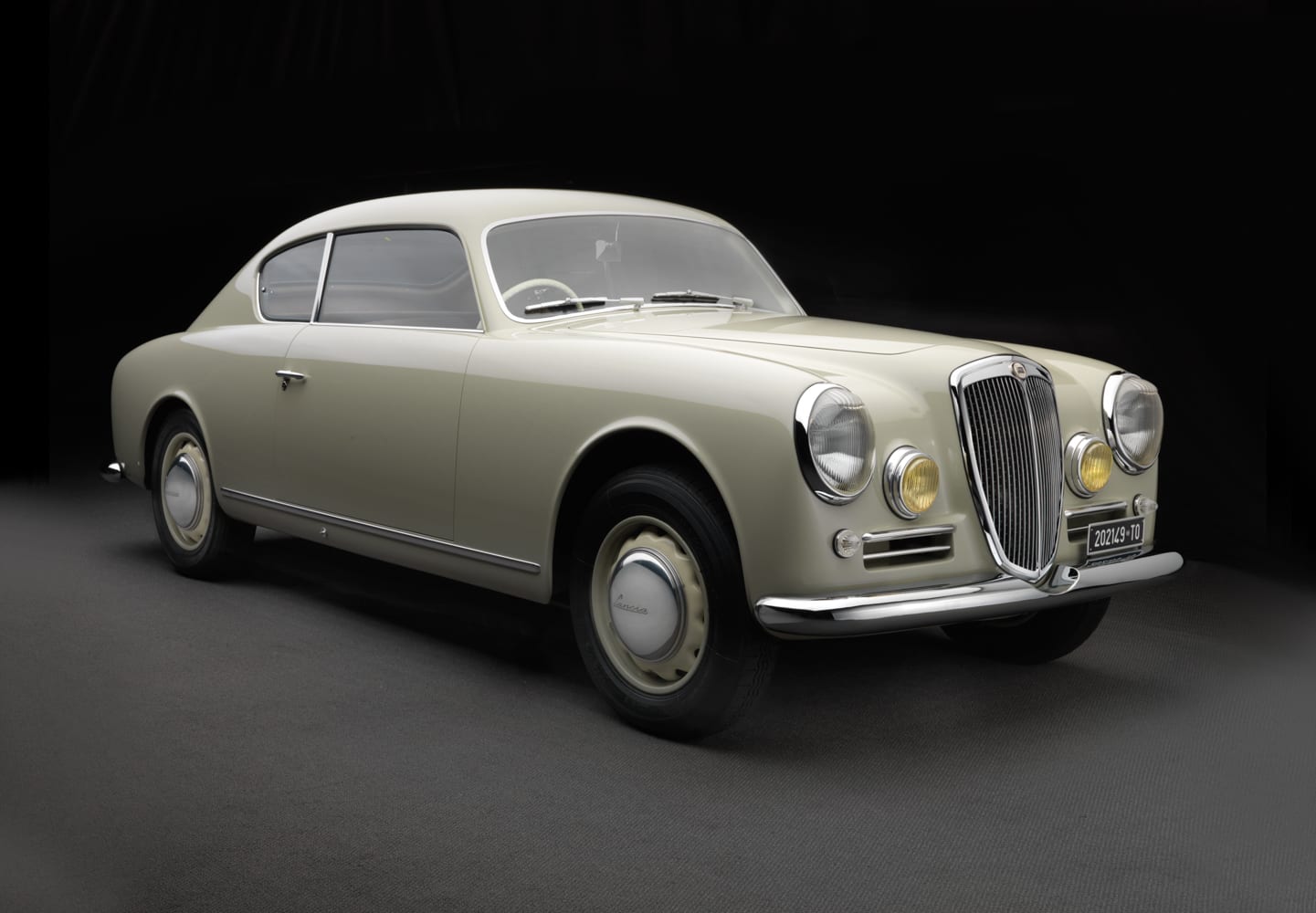Tech Specs
Six cylinder, 60 degree vee engine, two overhead valves per cylinder. 1991 cc, 80 hp at 4700 rpm.
Before/After
1952 Lancia


About the 1952 Lancia Aurelia B20 GT Series II
As Italy emerged from the trauma of World War II, there was an explosion of repressed creativity that showed clearly in the work of her talented artist and designers, especially those in the motor industry. Anticipating the avid public reception upon its debut, the 1951 Italian motorpress warned “The new Lancia Aurelia Coupe will prove irresistibly delicious to those gourmets attending the Grand Opening of the Italian Auto Show”. Show-goers adored the elegantly clean and unadorned design which belied the startling number of innovations in the Aurelia: unit body construction, independent front and rear suspension, a rear transaxle, inboard drum brakes. And it was potently powered by the first production V-6 engine.
The Aurelia B20 initiated a 1950s trend toward sophisticated and romantic sporting cars. The B20 was the world’s first 2 + 2 coupe, which refers to its intimate rear seating arrangement. The B20 was feisty on the racecourse in the day, and, later in the evening, could be handed off to the parking valet at La Scala.
The B20 Coupe was widely successful competitively in the early 1950s with its combination of light weight and nimble handling, long a Lancia attribute. It burst onto the racing scene with a surprising second place finish in the 1951 Mille Miglia, beaten only by a 4.1 liter 240 hp Ferrari. It also scored class wins at Le Mans, finishing 6th and 8th overall against much larger and faster cars.
The Aurelia was Lancia’s first new post-war car, a project guided by Gianni Lancia, founder Vincenzo’s son, and the head engineer, Vittorio Jano, the former Alfa Romeo Grand Prix engineer. Young Francesco de Virgilio was responsible for the design of the V-6, previously unachievable, and now widely copied.
This B20 coupe is a rare 2nd series car, with upgraded features like the separate tachometer and speedometer and larger tail fins. The engine is a slightly enhanced 2 liter, with modified valve arrangement for improved performance.
Some attribute the styling of the B20 to Felice Mario Boano and his Carrozzeria Ghia, although the bodies were mostly manufactured by Pinin Farina for more efficient production. Overall, 3871 B20s were produced. This standard bearer of elegant mid-century Italian automotive design is treasured by connoisseurs, racing enthusiasts, and anyone who simply appreciated a beautiful object.
Photos – Peter Harholdt







